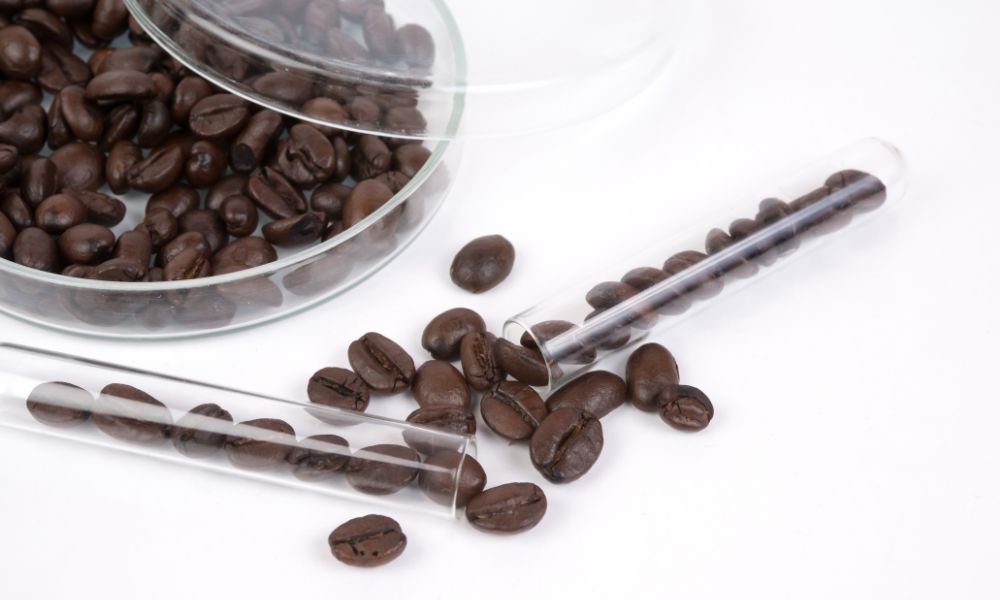Your cart is currently empty!
Caffeine vs Theobromine: What’s the Difference?

Caffeine and theobromine are two naturally occurring stimulants found in various plant species. Both compounds belong to a class of chemicals known as xanthines and share similarities. However, they also exhibit distinctions in terms of their sources, effects, and potential health benefits. Read on to learn the differences between caffeine and theobromine.
Sources of Caffeine and Theobromine
Caffeine is a well-known stimulant and primarily found in coffee beans, tea leaves, and cocoa beans. It also exists in smaller amounts in yerba mate, guarana, and kola nuts. Many energy drinks and over-the-counter medications, such as pain relievers and weight loss supplements, also contain caffeine.
Theobromine, on the other hand, is primarily found in cocoa beans, which we use to make chocolate. Lesser amounts of theobromine are present in tea leaves and some South American plant species, such as yerba mate and guarana berries.
Physiological Effects
Caffeine and theobromine are central nervous system stimulants, but they differ in the intensity and duration of their effects. Lab-grade caffeine is a more potent stimulant, leading to increased alertness, concentration, and physical performance. Its effects can be felt within 15–45 minutes of consumption and typically last from three to five hours.
Theobromine, however, has milder stimulant effects than caffeine. It acts as a vasodilator, causing blood vessels to widen and leading to a slight increase in heart rate and blood flow. Theobromine’s effects are longer-lasting than caffeine’s but are generally less noticeable.
Health Benefits and Concerns
Caffeine has been associated with various health benefits, such as improved cognitive function, enhanced physical performance, and a reduced risk of certain diseases, including Parkinson’s disease and Type 2 diabetes. However, excessive caffeine consumption can lead to side effects like insomnia, increased heart rate, and anxiety.
Theobromine, in moderate amounts, has been linked to health benefits, such as improved mood, reduced inflammation, and increased insulin sensitivity. It may also contribute to better dental health, as it has been found to inhibit the formation of dental plaque. Nevertheless, consuming large amounts of theobromine can cause side effects similar to those of caffeine, including increased heart rate, restlessness, and difficulty sleeping.
Now that you know the differences between caffeine and theobromine, you can make informed decisions about the best ingredients for your laboratory applications.
Comments
One response to “Caffeine vs Theobromine: What’s the Difference?”
-
This design is stellar! You obviously know how to keep a reader amused.
Between your wit and your videos, I was almost moved too
start my own blog (well, almost…HaHa!) Wonderful job.
I really loved what you had to say, and more than that,
how you presented it. Too cool!
Leave a Reply